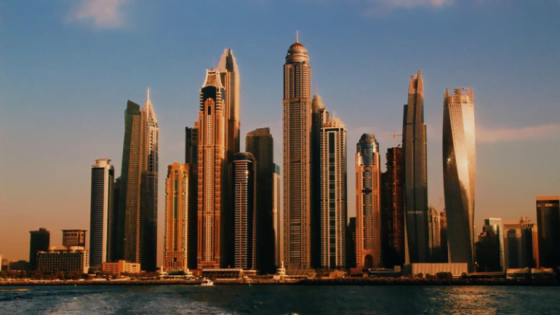Contents
- 1 The Origins of Abu Dhabi
- 2 The Bani Yas Tribe
- 3 The Rise of the Bani Yas Tribe
- 4 Founding of Abu Dhabi
- 5 Oil and Gas Industry in Abu Dhabi
- 6 Life of Sheikh Zayed bin Sultan Al Nahyan
- 7 Modern Infrastructure in Abu Dhabi
- 8 Abu Dhabi’s Growing Tourism Industry
- 9 Environmental Sustainability Initiatives in Abu Dhabi
- 10 Conclusion
Abu Dhabi History, Abu Dhabi is the proud capital of the United Arab Emirates. With its towering skyscrapers and opulent palaces, it’s a city that exudes power and luxury. But where did this modern metropolis come from? In this blog post, we’ll explore the history of Abu Dhabi, from its ancient roots to its present-day glory.
The Origins of Abu Dhabi
The origins of Abu Dhabi date back to the 17th century, when Bani Yas tribes settled in the area. The name Abu Dhabi translates to “Father of the Gazelle” and is thought to come from a folklore tale of a deer that was seen drinking from a pool near what is now the city’s center. During this time, the settlement was located by the coast and was part of a confederation ruled by the Banu Yas. In the early 1970s, two critical developments influenced the status of the Emirate of Abu Dhabi: The first was the establishment of the United Arab Emirates, and the second was the discovery of oil and gas reserves in Abu Dhabi. Sheik Zayed Bin Sultan Al Nahyan, founder and first President of the United Arab Emirates, was committed to restoring Qasr Al Hosn, a historic fort in Abu Dhabi that his ancestors had built, and modernizing infrastructure across the city. Today, Abu Dhabi is a thriving modern city with a bustling tourism industry and numerous sustainability initiatives.
The Bani Yas Tribe
The Bani Yas tribe is one of the most highly regarded tribes in Southern Arabia, and its origin can be traced back to Yas Bin Amer. Led by their rulers, the Al Nahyan family, their headquarters is now based in Abu Dhabi, and they are part of the leading tribes of the Arabian Peninsula. They made their home in Liwa Oasis before resettling in Abu Dhabi in 1793, where Sheikh Zayed bin Sultan Al Nahyan was born. The Bani Yas were agricultural and pastoral, living in what are today the emirates of Abu Dhabi and Dubai. They were responsible for founding Abu Dhabi as we know it today. Sir Bani Yas Island is famous for its ancient archaeological sites and geological features, making it a popular destination for those looking to explore the history of Abu Dhabi. With the recent growth of oil and gas industries, the development of modern infrastructure, and the growing tourism industry in Abu Dhabi, the legacy of the Bani Yas tribe continues to be felt throughout the Emirate.
The Rise of the Bani Yas Tribe
The Bani Yas tribe was an essential part of the history of Abu Dhabi and played an integral role in the city’s rise. During the 1700s, the Bani Yas tribe settled in Abu Dhabi, developing it from a fishing village to a prosperous emirate. With their agricultural and pastoral background, they built vital infrastructure and created a thriving economy. Sheikh Zayed bin Sultan Al Nahyan rose to power during this time and took control of Abu Dhabi. He brought stability and prosperity to the city with his booming oil and gas industry, modern infrastructure, and sustainability initiatives. Abu Dhabi became a global powerhouse in the tourism industry through his leadership. The Bani Yas tribe was essential to Abu Dhabi’s growth, setting the stage for Sheikh Zayed’s success.
Founding of Abu Dhabi
The history of Abu Dhabi is closely linked to the Bani Yas tribe, who have lived in the area since the 16th century. In the 1700s, the tribe officially established Abu Dhabi, meaning “Father of the Gazelle” in Arabic. This name was given to it due to a folklore tale involving a deer found near a water spring by Sheikh Shakhbut bin Dhiyab Al Nahyan. This event is believed to have marked the foundation of Abu Dhabi as a settlement. However, archaeological finds suggest that humans have lived in the region for over 100,000 years. With its rich history and abundant resources, Abu Dhabi has grown into a thriving metropolis with world-class infrastructure, modern amenities, and many leisure attractions. It is now one of the most desirable cities in the world for tourists and investors alike.
Oil and Gas Industry in Abu Dhabi
The oil and gas industry in Abu Dhabi has a long and storied history. During the 1930s, the Abu Dhabi government granted its first oil concession to the Trucial Coast Development Oil Company, later renamed the Abu Dhabi Petroleum Company. After several failed attempts, the first Emirati Crude Oil was struck at 8,755 ft on the Umm Shaif field in Abu Dhabi. This event marked a significant turning point for the country’s economy, ushering in an era of rapid growth and development. Today, Abu Dhabi is among the top 10 nations by reserve and production of oil and gas. Its industry is integral to the country’s infrastructure, economy, and quality of life.
Life of Sheikh Zayed bin Sultan Al Nahyan
Sheikh Zayed bin Sultan Al Nahyan is a significant figure in the history of Abu Dhabi. He was born in 1918 to Sheikh Sultan bin Zayed Al Nahyan, Ruler of Abu Dhabi, from 1922 to 1926. Growing up in Al Ain City, with its harsh desert surroundings, had a clear impact on his character, and he became renowned for his patience, forward-looking vision, and commitment to the development of the UAE. He was named after his grandfather, the governor from 1855 to 1906, and was raised in Al Hosn Fort in the heart of Abu Dhabi. As the first president of the United Arab Emirates, Sheikh Zayed was instrumental in transforming Abu Dhabi from a quiet fishing village into a modern metropolis with a booming oil and gas industry, world-class infrastructure, and a flourishing tourism sector. He also set an ambitious target to make the UAE one of the most sustainable countries in the world by 2021, launching numerous initiatives to protect and preserve its natural resources.
Modern Infrastructure in Abu Dhabi
The Abu Dhabi government has invested heavily in building modern infrastructure to support the city’s growing population and economy. Significant investments include the development of urban planning enhancement of the Maqta bridge, Abu Dhabi Airport, and the Corniche. This infrastructure helps facilitate the UAE’s growing tourism industry and its commitment to environmental sustainability initiatives. Such modern infrastructure has helped transform Abu Dhabi from a fishing village into a global city with an ever-growing range of attractions and services.
Abu Dhabi’s Growing Tourism Industry
In recent years, Abu Dhabi has seen a surge in its tourism sector. Thanks to the government’s efforts to create new attractions, hotels, and a welcoming environment, Abu Dhabi has attracted more visitors worldwide. In 2018, the Emirate welcomed 10.3 million international visitors, with India and China remaining at the top of the list of source markets for Abu Dhabi’s tourism industry. The Department of Culture and Tourism (DCT) is tasked with developing and promoting the entire tourism sector. Its efforts have seen an increase in website sessions via social referrals. The Mice industry is also thriving as a result of government policies. At the same time, cruise liners have also been increasingly attracted to Abu Dhabi’s waters thanks to its traditional economic acumen and stunning surroundings. As more people continue to visit Abu Dhabi, locals, and tourists alike can enjoy all this beautiful city has to offer while preserving its rich culture and history.
Environmental Sustainability Initiatives in Abu Dhabi
The Abu Dhabi government has been proactive in its commitment to environmental sustainability, having implemented several initiatives to tackle the effects of climate change. The UAE Vision 2021, the UAE Centennial 2071, and the UAE Energy Strategy 2050 are all sustainability initiatives that seek to reduce carbon emissions and increase clean energy sources. DMT also launched its sustainability initiative, estidama, a program tailored to the Middle East region that promotes urban planning and construction aligned with sustainable principles. Additionally, the Abu Dhabi Global Environmental Data Initiative (AGEDI) has conducted various studies to measure the impact of climate change in the region. Finally, the NGGS was adopted by the UAE Cabinet in 2015 and is responsible for driving sustainability targets and goals outlined in the UAE Vision 2021.
Conclusion
Abu Dhabi is a fantastic city that has a long and exciting history. From its first inhabitants – the Bani Yas tribe – to its modern infrastructure, Abu Dhabi has developed into a prosperous city. Thanks to the vision of Sheikh Zayed bin Sultan Al Nahyan, Abu Dhabi has seen tremendous development and growth over the past decades. The city is home to vast energy reserves and a booming tourism industry. It is also leading the way in environmental sustainability initiatives. Abu Dhabi is a vibrant and dynamic city that will continue to evolve and grow.













